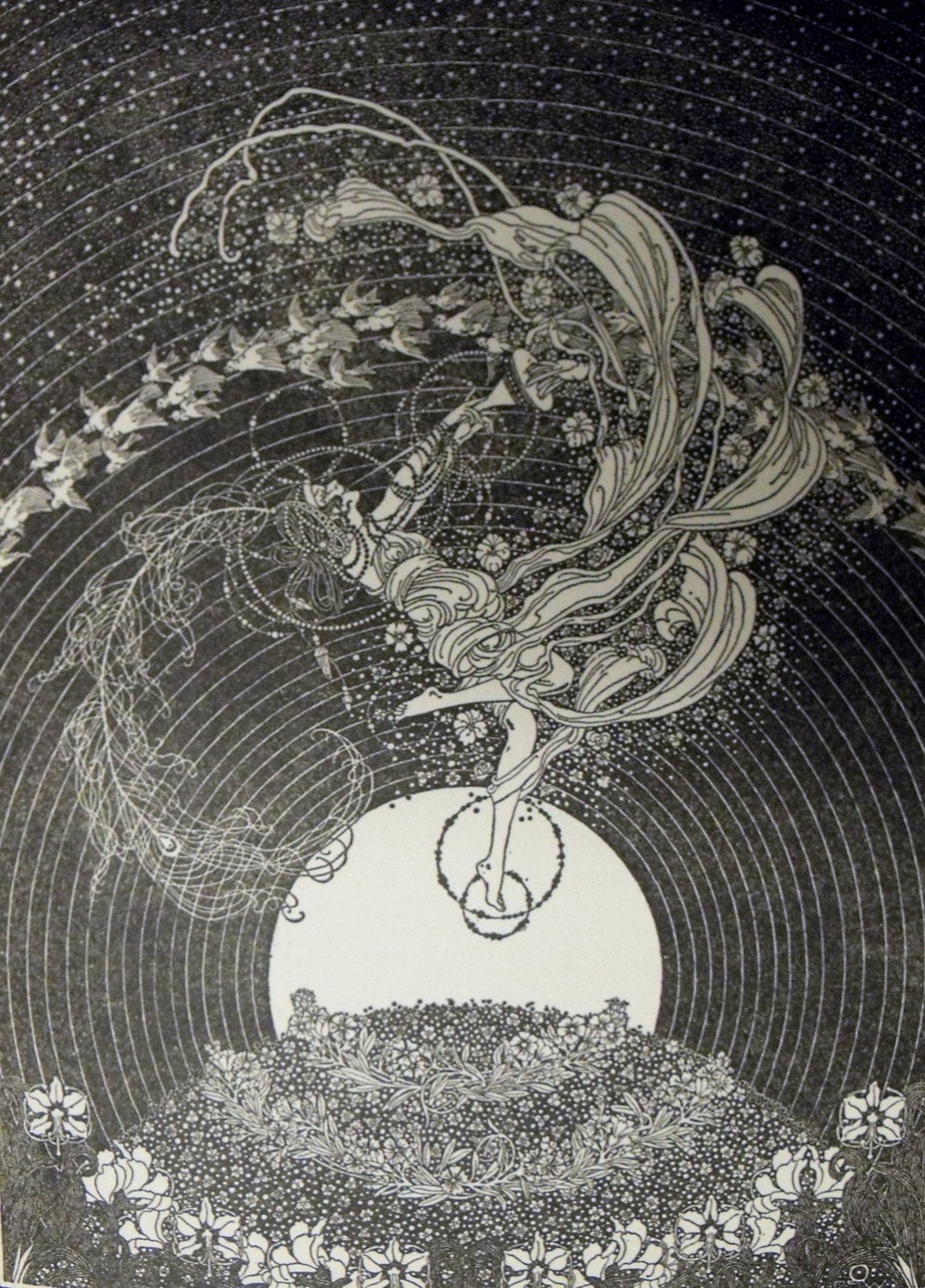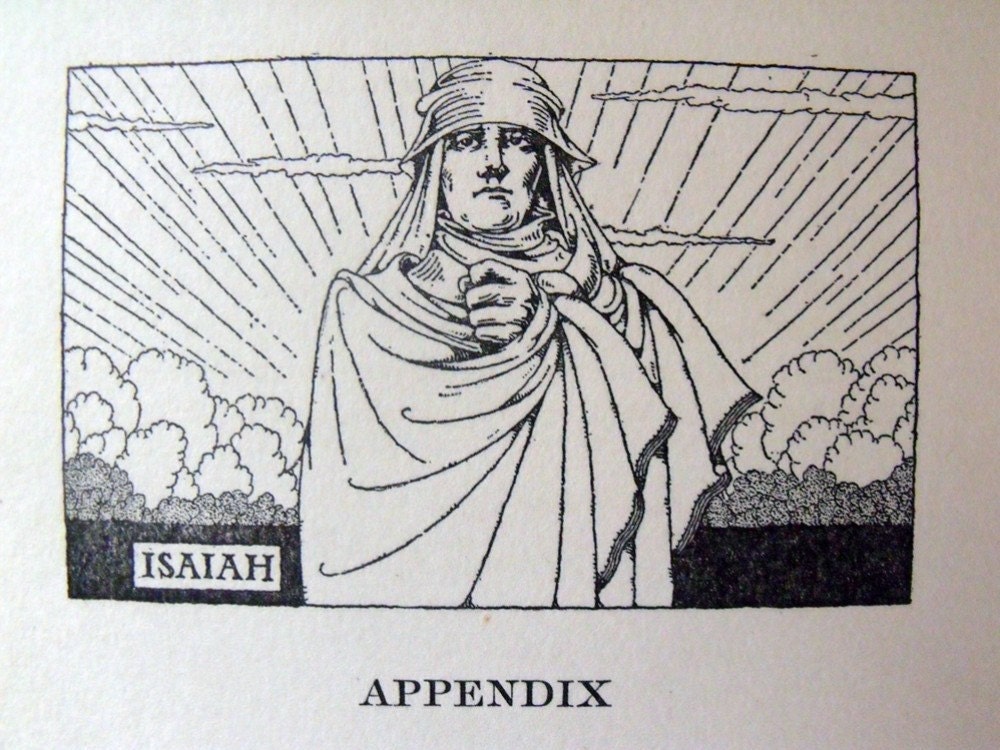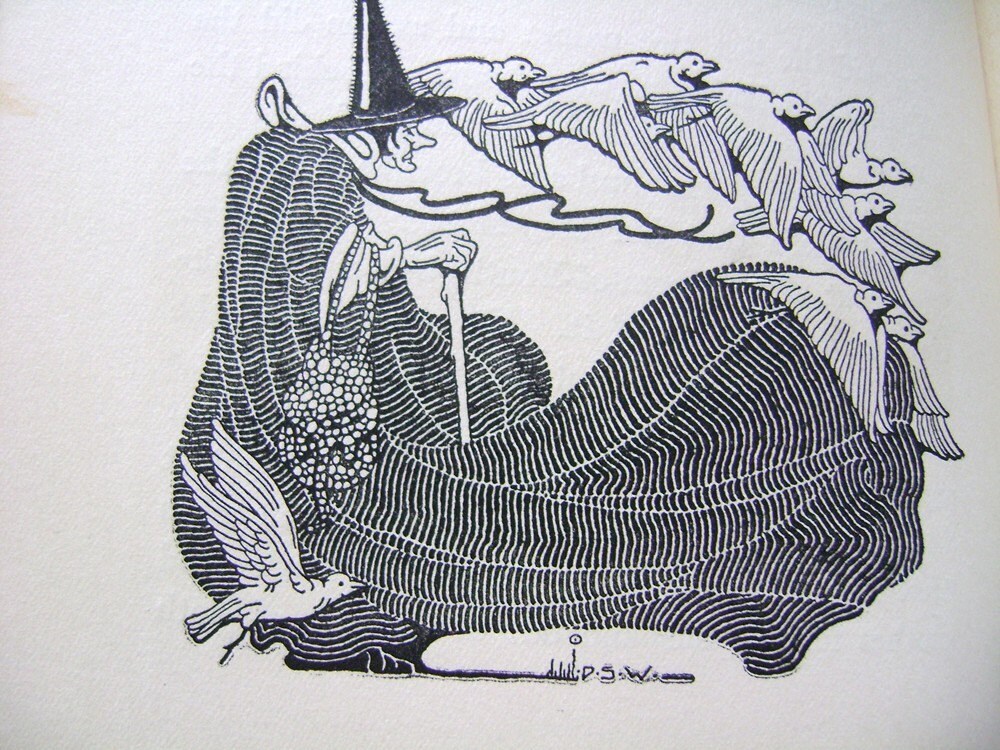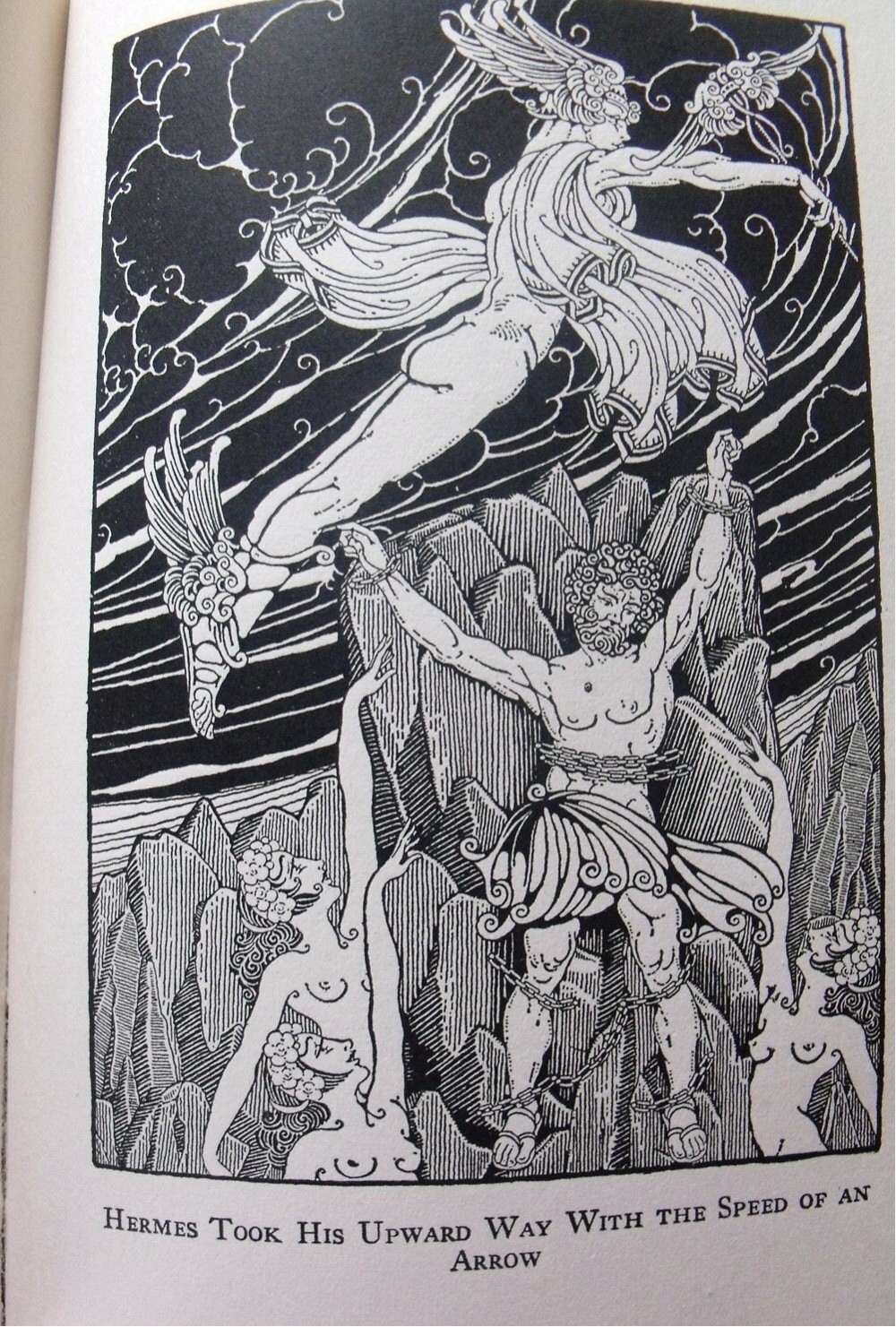I've never associated storybook illustration with industrial design, but the 20th century had two individuals who were great successes in both fields.
Tom Lamb (1896-1988) was a children's book illustrator who illustrated for books, Good Housekeeping and did a line of children's illustrations called Kiddyland that was put on textiles. And he was also an industrial designer who specialized in handles. Yes, handles -- he was very into making handles functional, and worked on everything from luggage to cutlery. But my favorite Tom Lamb creation is the whimsical book
"Bing-O" that was published by Volland. Bing-O was a swastika-wearing monkey who goes on a journey of discovery and returns home a hero.
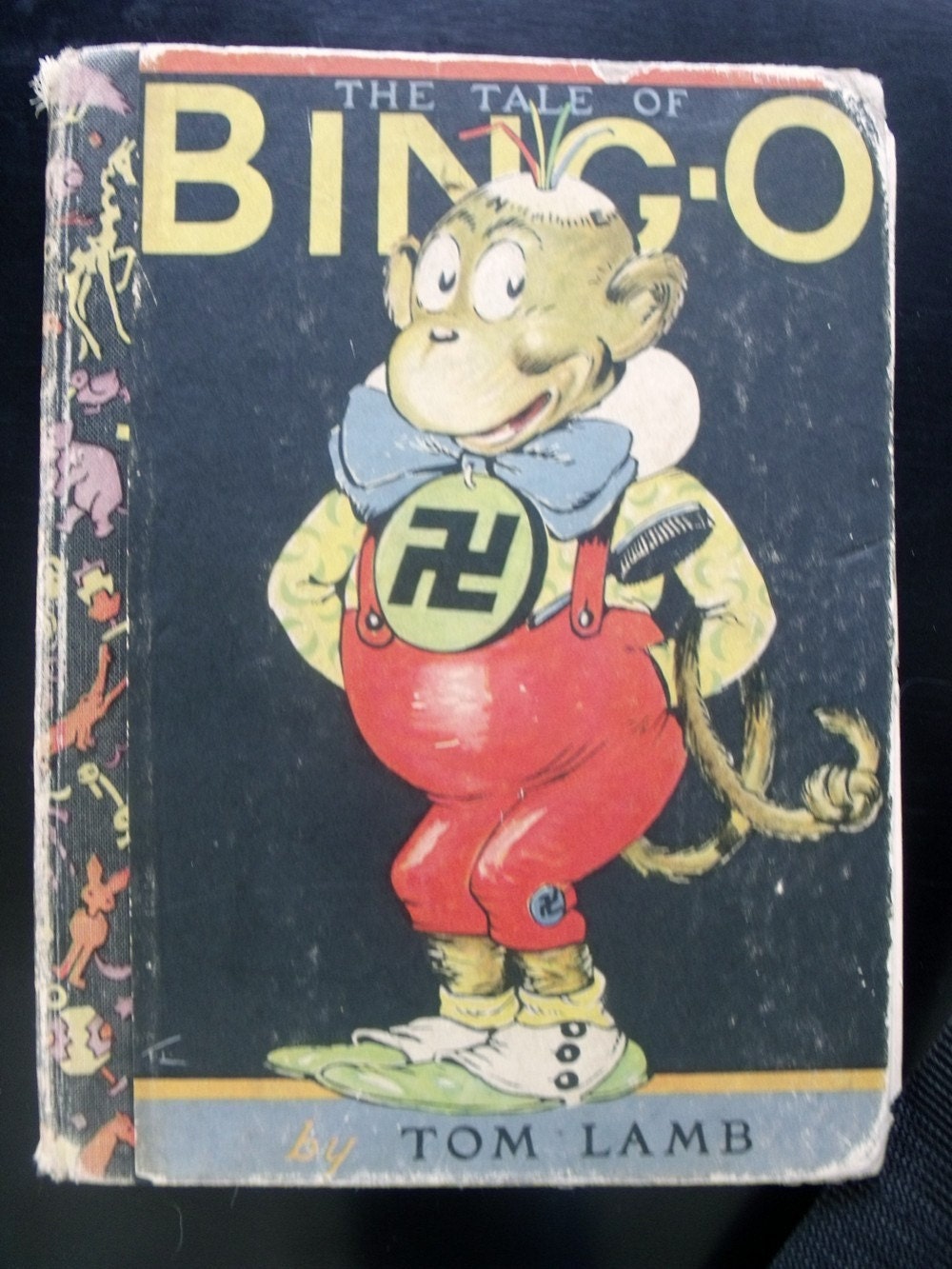 |
Bing-O, wearing his swastika |
"Bing-O" was printed prior to the rise of the Nazi empire, although Hitler had already co-opted the ancient and sacred symbol of the swastika. But I like to think that Lamb, being a brilliant and erudite man, somehow ran across a story of the monkey-headed Hindu god Hanuman and it provoked an idea for a book. In India, the swastika is an auspicious symbol of good fortune that represents the wheel of life.
 |
Hanuman
|
Yeah, I know it's a stretch, but I like it as a theory.
The other industrial designer/illustrator was a genius. Not that Tom Lamb wasn't extraordinary, but he wasn't John Vassos (1898-1985.) Vassos designed everything from subway turnstiles to accordions, cutlery, microscopes and probably most noteworthy, TV/radio/record player cabinetry. His work was very art deco
in nature -- spare, graphic and beautiful.
 |
| Vassos-designed radio |
Vassos most certainly didn't do graphic arts for children's books -- he did illustrations for his own books like "Contempo" and "Phobia" that were dark and a bit chilling, yet visually stunning. Some of his most famous work is for Oscar Wilde works like "Harlot's House," "The Ballad of Reading Gaol, " and "Salome." His work from "Salome" is perhaps his best-known. Aubrey Beardsely did some pretty kick-ass illustrators for that play, but I honestly like what Vassos did better.
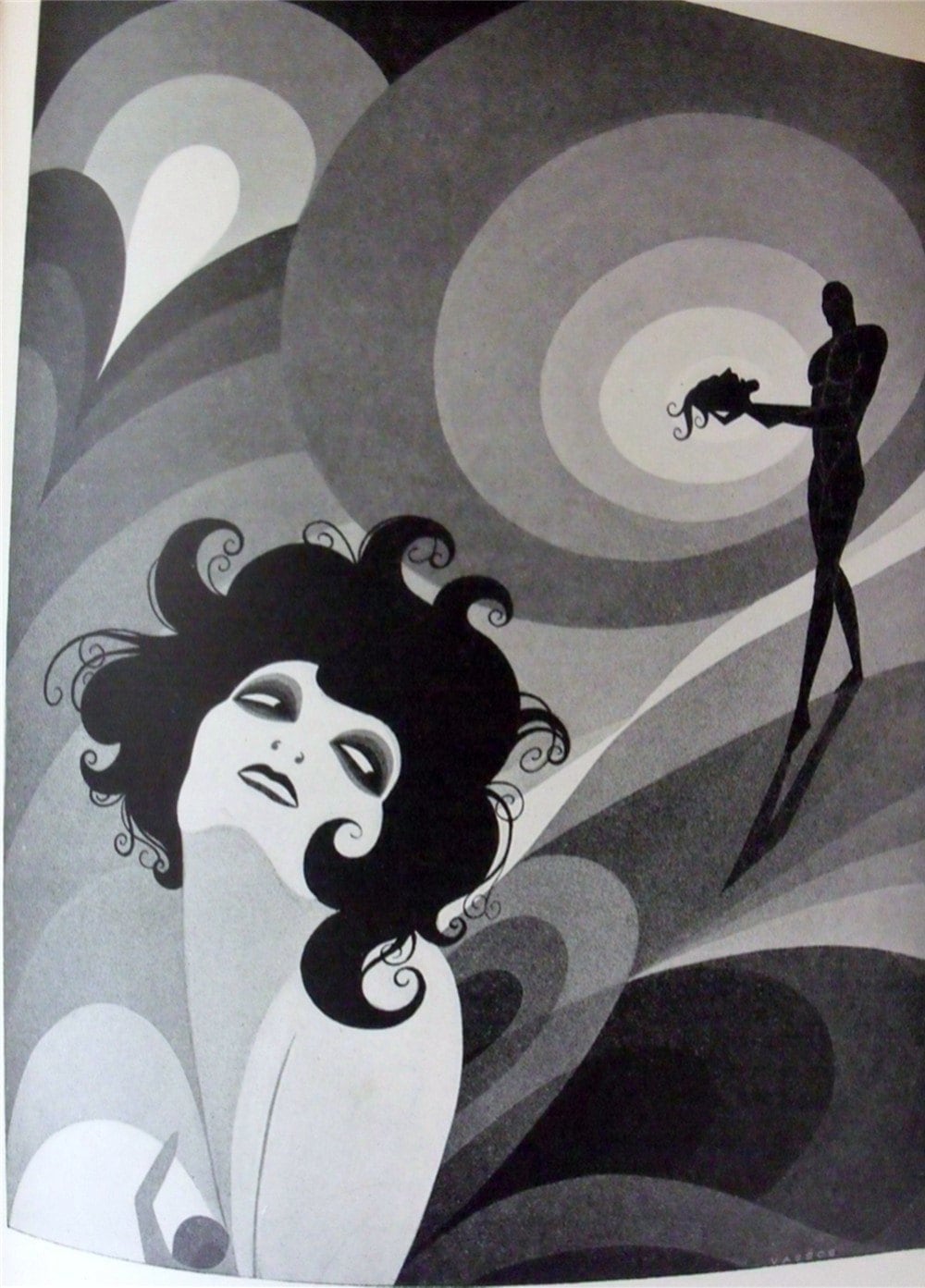 |
| Vassos illustration for Oscar Wilde's "Salome" |
Perhaps Lamb and Vassos are proof that over-specializing is overrated.




